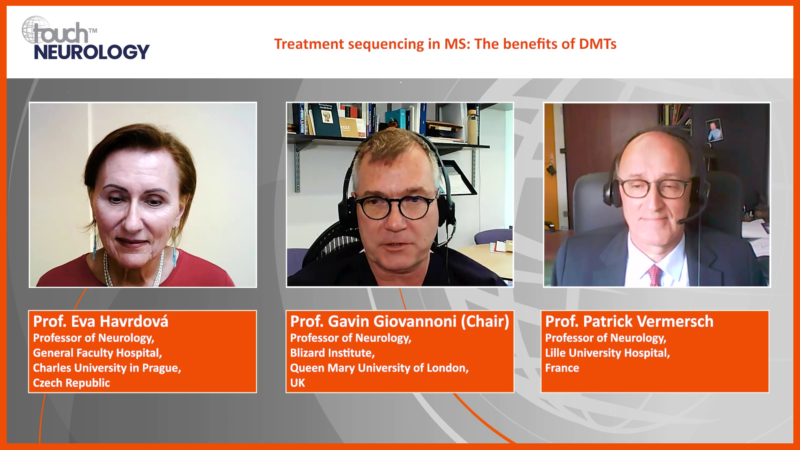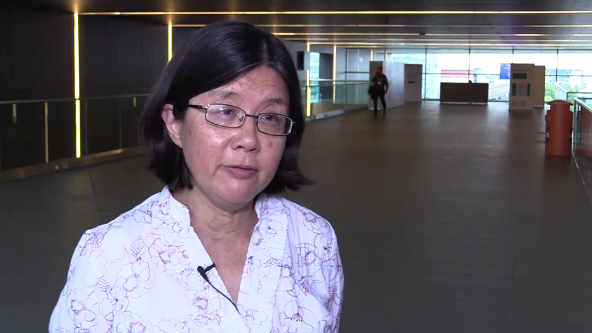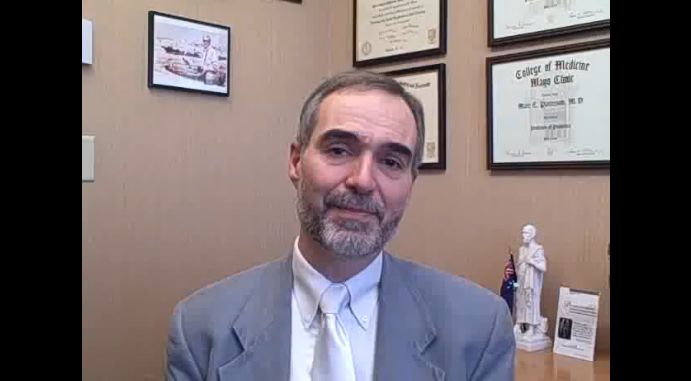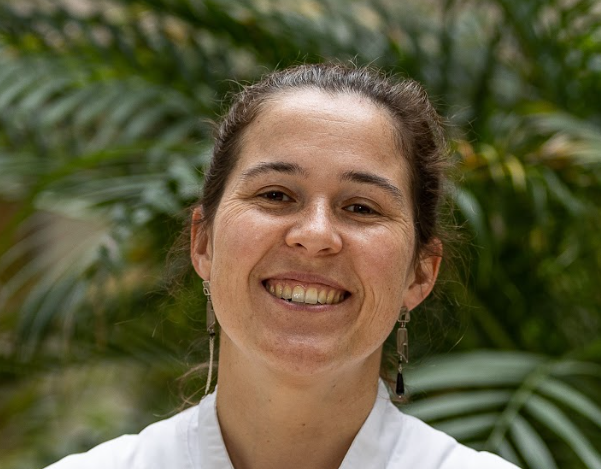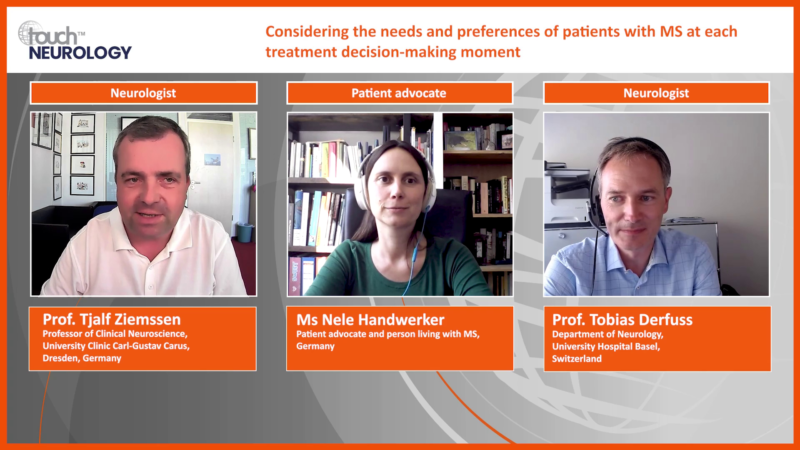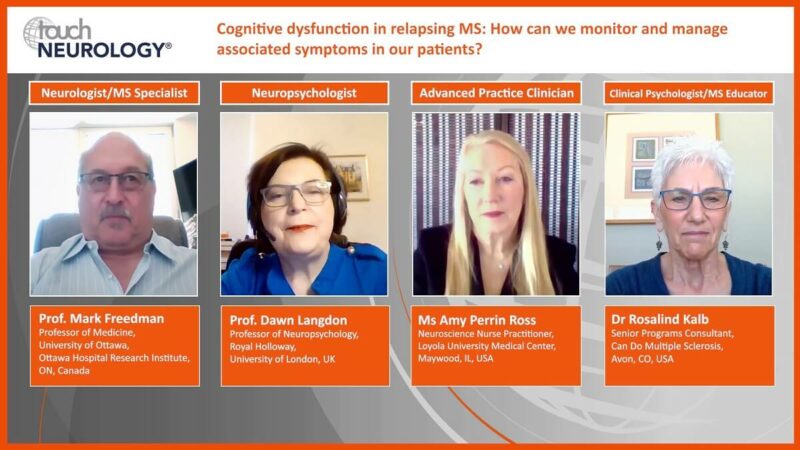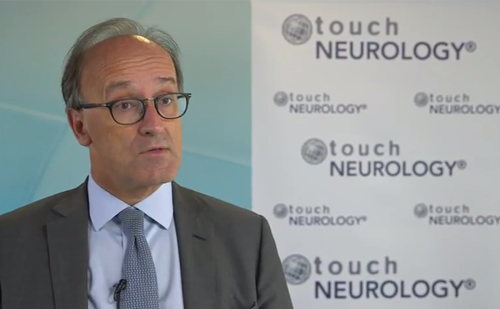touchIN CONVERSATION
 A relaxed discussion between two faculty focussed on real world clinical issues. Useful tips below will show how to navigate the activity. Join the conversation.
Close
A relaxed discussion between two faculty focussed on real world clinical issues. Useful tips below will show how to navigate the activity. Join the conversation.
Close
 A relaxed discussion between two faculty focussed on real world clinical issues. Useful tips below will show how to navigate the activity. Join the conversation.
Close
A relaxed discussion between two faculty focussed on real world clinical issues. Useful tips below will show how to navigate the activity. Join the conversation.
Close
Individualizing long-term treatment and care in active MS: How are therapeutic sequencing options evolving to address unmet needs?
- Select in the video player controls bar to choose subtitle language. Subtitles available in English, French, German, Italian, Portuguese, Spanish.
- Downloads including slides are available for this activity in the Toolkit
Learning Objectives
After watching this activity, participants should be better able to:
- Evaluate factors guiding the use of high-efficacy DMTs in the management of active MS
- Summarize current approaches and safety considerations relating to DMT switching and sequencing in MS
- Appraise the use of DMTs in women of child-bearing age with MS, including considerations for family planning and implications during pregnancy and beyond
Overview
In this activity, two experts in MS explore the evolving practicalities of therapeutic sequencing options in MS. They discuss when to consider high-efficacy DMTs, how to optimize a switch in DMT, and practical considerations surrounding the use of DMTs in women of child-bearing age living with MS.
The discussion is guided by pre-canvassed questions provided by healthcare professionals involved in the management of people living with MS.
This activity is jointly provided by USF Health and touchIME. read more
Target Audience
General neurologists and MS specialists, including specialist nurses, involved in the management of people with MS.
Disclosures
USF Health adheres to the Standards for Integrity and Independence in Accredited Continuing Education. All individuals in a position to influence content have disclosed to USF Health any financial relationship with an ineligible organization. USF Health has reviewed and mitigated all relevant financial relationships related to the content of the activity. The relevant relationships are listed below. All individuals not listed have no relevant financial relationships.
Faculty
Dr Ruth Dobson discloses: Advisory board or panel fees from Biogen, Janssen, Merck KGaA, Novartis, Roche and Sandoz. Grants/research support from Biogen, Celgene and Merck KGaA. Other financial or material support (royalties, patent, etc.) from Biogen, Janssen, Merck KGaA, Novartis, Roche and Sandoz.
Dr Ide Smets discloses: Speakers bureau fees from EPG Health (relationship terminated).
Content reviewer
John Ciotti, MD discloses: Advisory Board or Panel fees from EMD Serono, Genentech, Janssen, Novartis (All Relationships Terminated).
Touch Medical Directors
Christina Mackins-Crabtree has no financial interests/relationships or affiliations in relation to this activity.
USF Health Office of Continuing Professional Development and touchIME staff have no financial interests/relationships or affiliations in relation to this activity.
Requirements for Successful Completion
In order to receive credit for this activity, participants must review the content and complete the post-test and evaluation form. Statements of credit are awarded upon successful completion of the post-test and evaluation form.
If you have questions regarding credit please contact cpdsupport@usf.edu.
Accreditations
Physicians
This activity has been planned and implemented in accordance with the accreditation requirements and policies of the Accreditation Council for Continuing Medical Education (ACCME) through a joint providership of USF Health and touchIME. USF Health is accredited by the ACCME to provide continuing medical education for physicians.
USF Health designates this enduring material for a maximum of 1.0 AMA PRA Category 1 CreditTM. Physicians should claim only the credit commensurate with the extent of their participation in the activity.
Advanced Practice Providers
Physician Assistants may claim a maximum of 1.0 Category 1 credits for completing this activity. NCCPA accepts AMA PRA Category 1 CreditTM from organizations accredited by ACCME or a recognized state medical society.
The AANPCP accepts certificates of participation for educational activities approved for AMA PRA Category 1 CreditTM by ACCME-accredited providers. APRNs who participate will receive a certificate of completion commensurate with the extent of their participation.
Date of original release: 12 June 2023. Date credits expire: 12 June 2024.
If you have any questions regarding credit please contact cpdsupport@usf.edu.
To obtain the CE/CME credit(s) from this activity, please complete this post-activity test.
Claim Credit- Select in the video player controls bar to choose subtitle language. Subtitles available in English, French, German, Italian, Portuguese, Spanish.
- Downloads including slides are available for this activity in the Toolkit
You may also be interested in...

REGISTER NOW FOR FREE ACCESS TO
- 1000+ topical and insightful peer-reviewed journal articles
- 100+ hours of bite-sized congress highlights
- 9 major therapy areas packed with the latest scientific advances
- 150+ specialties offering learn-on-the-go medical education
- + Concise email updates and newsletters so you never miss out








